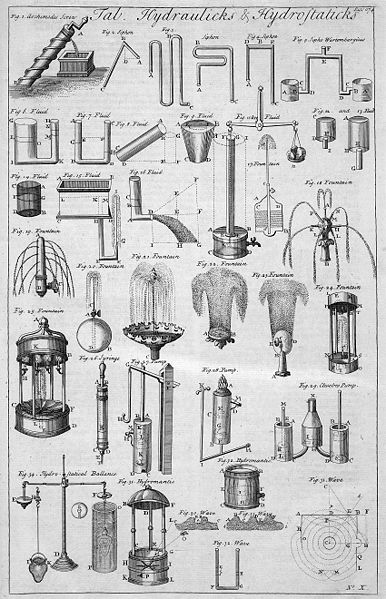Fluid power is the use of fluids under pressure to generate, control, and transmit power. Fluid power is conventionally subdivided into hydraulics and pneumatics. Although steam is also a fluid, steam power is usually classified separately from fluid power. Compressed-air and water-pressure systems were once used to transmit power from a central source to industrial users over extended geographic areas; fluid power systems today are usually within a single building or mobile machine.
A hydraulic excavator
A hydraulic rescue tool is used to extract injured people from wrecked cars.
Hydraulics is a technology and applied science using engineering, chemistry, and other sciences involving the mechanical properties and use of liquids. At a very basic level, hydraulics is the liquid counterpart of pneumatics, which concerns gases. Fluid mechanics provides the theoretical foundation for hydraulics, which focuses on applied engineering using the properties of fluids. In its fluid power applications, hydraulics is used for the generation, control, and transmission of power by the use of pressurized liquids. Hydraulic topics range through some parts of science and most of engineering modules, and cover concepts such as pipe flow, dam design, fluidics and fluid control circuitry. The principles of hydraulics are in use naturally in the human body within the vascular system and erectile tissue.

Illustration of hydraulic and hydrostatic, from the "Table of Hydraulics and Hydrostatics", from Cyclopædia, or an Universal Dictionary of Arts and Sciences, edited by Ephraim Chambers, 1728, Vol. 1
Waterwheels
Moat and gardens at Sigiriya
Aqueduct of Segovia, a 1st-century AD masterpiece






